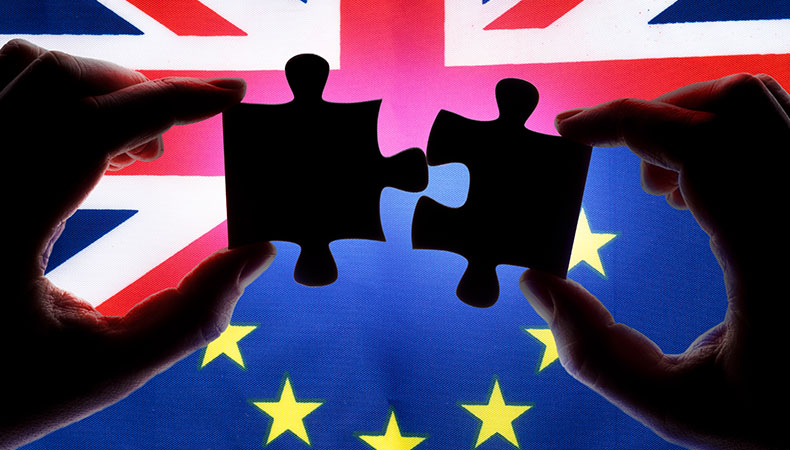How EU pay transparency rules are influencing UK pay gap reporting
The EU Pay Transparency Directive is a set of measures to increase pay transparency proposed by the EU, to come into practice in 2026.
The directive builds on the growing body of pay transparency laws already in place across Europe and aims to combat pay discrimination and reduce gender pay gaps.
The directive itself is simply a legislative act that sets out goals that EU countries must achieve.
However, it is up to individual countries to devise the laws that will help them reach these goals.
Although many UK companies won’t be directly affected by the directive, pay transparency is an important topic that employers in the UK should pay attention to.
Pay transparency rules in the EU have a significant influence on pay gap reporting in the UK, especially given that the UK is closely linked to European standards and practices, even after Brexit.
So how are the EU rules impacting UK employers?
1. Increased awareness and pressure on gender pay gap reporting
The new regulations are pushing UK companies to adopt more transparent pay practices and align to the global trend toward pay transparency.
The EU’s focus on reducing gender pay disparities has pressured UK businesses to maintain or improve their gender pay gap reporting and actions to close the gap.
Even if the UK has not adopted the EU's full range of rules, the common market and international business relations make UK companies aware of EU regulations.
2. Influence on UK government policies
The UK's existing gender pay gap reporting rules, which came into effect in 2017, were influenced by similar EU guidelines, particularly the Equality Directive.
While the UK has not adopted the EU's Pay Transparency Directive directly, it has used EU standards as a benchmark in creating domestic policies.
The UK government may adopt further measures to align with EU standards on pay transparency, to ensure that UK businesses are not disadvantaged in European markets.
3. Global corporate pressure
Many large corporations in the UK, particularly multinational companies, are influenced by EU and global standards.
The EU’s push for pay transparency creates a ripple effect, encouraging UK-based firms to align with these standards in order to maintain their international reputation and avoid legal challenges.
Companies want to ensure consistency in their operations and policies across different jurisdictions, and therefore many are choosing to voluntarily adopt more transparent pay structures, even if the UK government does not enforce them.
4. Focus on intersectionality and broader transparency
The EU's approach to pay transparency is evolving to cover not only gender pay gaps but also other factors such as ethnicity, disability and age.
This broadens the scope of reporting and accountability, which may influence the UK to look beyond just gender pay gap reporting and encourage companies to consider a more holistic approach to equal pay, mirroring trends seen in the EU.
5. Impact on public perception and employer reputation
With the increasing focus on pay transparency, UK employers are becoming more aware of the importance of demonstrating their commitment to fair pay practices.
Public perception, especially among employees and customers, is increasingly shaped by transparency efforts.
Companies that adopt EU-style pay transparency initiatives may improve their reputations, which can help attract talent and enhance customer loyalty.
6. Potential future regulation
There is growing discussion within the UK about strengthening its gender pay gap reporting rules to align more closely with EU-style pay transparency regulations.
To compete in a global economy that is moving toward more stringent transparency, there could be future moves to enhance reporting obligations, such as expanding coverage to include ethnicity and other demographics in pay gap reporting.
7. Shift toward data-driven accountability
In the EU, companies are increasingly required to provide detailed data on their pay structures, which is leading to better tracking of gender and diversity gaps.
This data-driven approach is influencing UK businesses to follow suit.
Even without direct EU mandates, many UK companies are moving toward more detailed and systematic tracking of pay disparities to maintain compliance with both domestic and international expectations.
What about the impact on employees and workers?
The directive will give workers across the EU much more access to information, both before and during employment.
This has the potential to completely change the way that workers search for work and negotiate salaries.
Fundamentally, employers who believe in the mindset of “we've always done it this way” can no longer rely on that approach.
Employers will need to articulate clear methodologies to differentiate between:
- Roles within and across the organisation
- Jurisdictional variations of total reward
We recommend a belt-and-braces approach, beginning with a robust job levelling methodology that enables consistent matching of roles, even if they are referred to by different names across regions.
This output will provide the compliant architecture to overlay hierarchical levels to which reward, technical and creative variances within roles can be captured.
This architecture could be used to support job families and to tell a progression story - a key element of your EVP.
Summary
While the UK is no longer part of the EU, the influence of EU pay transparency rules is still felt through global business practices, cross-border expectations, and the evolution of UK government policies.
UK companies and policymakers are keenly aware of these changes, and the EU's rules are shaping the ongoing discussions around improving pay gap transparency in the UK.
Pay transparency is here to stay, and the EU Directive further reinforces this by forcing change and levelling the playing field.
Employers should take the opportunity to prepare now by developing a pay transparency strategy that meets the requirements of the directive while also advancing their own goals surrounding equal pay, DEI, role progression and other organisational priorities.
Supplied by REBA Associate Member, Turning Point
Our data and insight helps organisations build the best reward strategy for their business and people.








